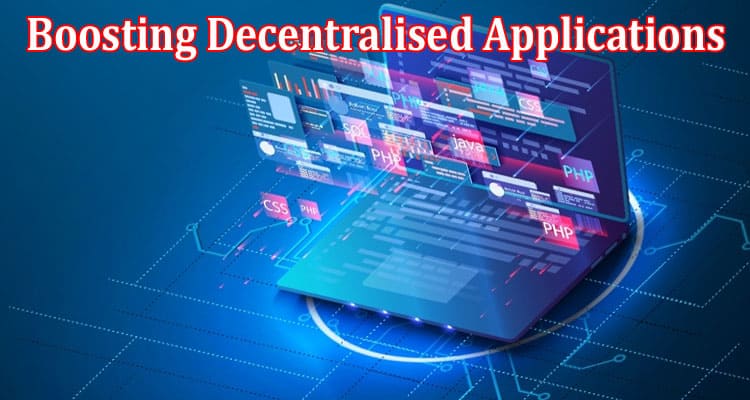Boosting Decentralised Applications (Dapps): Transforming How We Use Technology
The emergence of blockchain technology in recent years has opened the way for decentralized apps (DApps), which are revolutionizing the field of digital interactions. DApps make use of the benefits of blockchain’s decentralized structure to develop cutting-edge solutions that are impervious to censorship, increase privacy, and give users more authority over their data. This essay will examine the idea of DApps and how they can transform how we engage with technology.
A programme that operates on a decentralized network of computers, frequently created on blockchain platforms like Ethereum or EOS, is what a DApp is at its heart. DApps use the distributed nature of blockchain to work in a peer-to-peer manner, in contrast to traditional programmes that depend on a central server for data storage and processing. This decentralized architecture offers a number of significant advantages.
The increased security of DApps is one of its main benefits. DApps reduce the possibility of cyberattacks and data breaches by removing the reliance on a single point of failure. DApps are more resistant to hacking attempts and unauthorized access because of the decentralized design of these applications, which assures that there is no single point of failure.
Additionally, DApps provide consumers more autonomy over their data. Individuals are exposed to the possibility of data exploitation or abuse since traditional programmes frequently gather and store user data on centralized servers. DApps, in contrast, allow consumers to maintain control and ownership over their data while utilizing cryptographic techniques to ensure privacy. Users have control over their digital identities because they may decide which information to share and with whom.
DApps support open cooperation and innovation as well. These applications are genuinely global endeavors because of the decentralized aspect that allows developers from all over the world to participate in their creation. Anyone may inspect and audit the underlying code in open-source DApps, ensuring openness and encouraging community interaction. This teamwork-based strategy promotes quick invention and the development of many, user-focused apps.
One of the most notable industries that DApps are revolutionizing is decentralized finance (DeFi). Blockchain technology is used by DeFi apps to provide financial services including lending, borrowing, and decentralized exchanges without the need for middlemen. These DApps provide people access to financial services independent of where they are physically located or what banking infrastructure is already in place. DeFi DApps’ transparency and security have the ability to democratize money and upend established financial structures.
DApps are spreading outside of the banking industry into a number of industries, including social networking, gaming, supply chain management, and healthcare. Platforms for social media that are not centralized try to solve problems like algorithmic manipulation and censorship by giving users more control over their data. Real in-game asset ownership is provided through DApps in the gaming sector, and gamers may safely exchange them on blockchain-based markets. By logging each transaction on an immutable ledger, DApps improve transparency and traceability in supply chain management. In the healthcare industry, DApps make it possible to securely share medical records, encourage data sharing for research, and give individuals more choice over their health information.
Decentralized apps (DApps) are a disruptive force in the technology industry, to sum up. The greater security, user control, privacy, and creativity that DApps provide are made possible by their decentralized architecture. DApps are disrupting established sectors, from finance and social media to gaming and supply chain management, by getting rid of central authority. DApps’ potential to fundamentally alter how we engage with technology is becoming more and more clear as they develop. Adopting this decentralized paradigm brings up new possibilities for digital era collaboration, transparency, and user empowerment.
Writer:
Saqlain,




